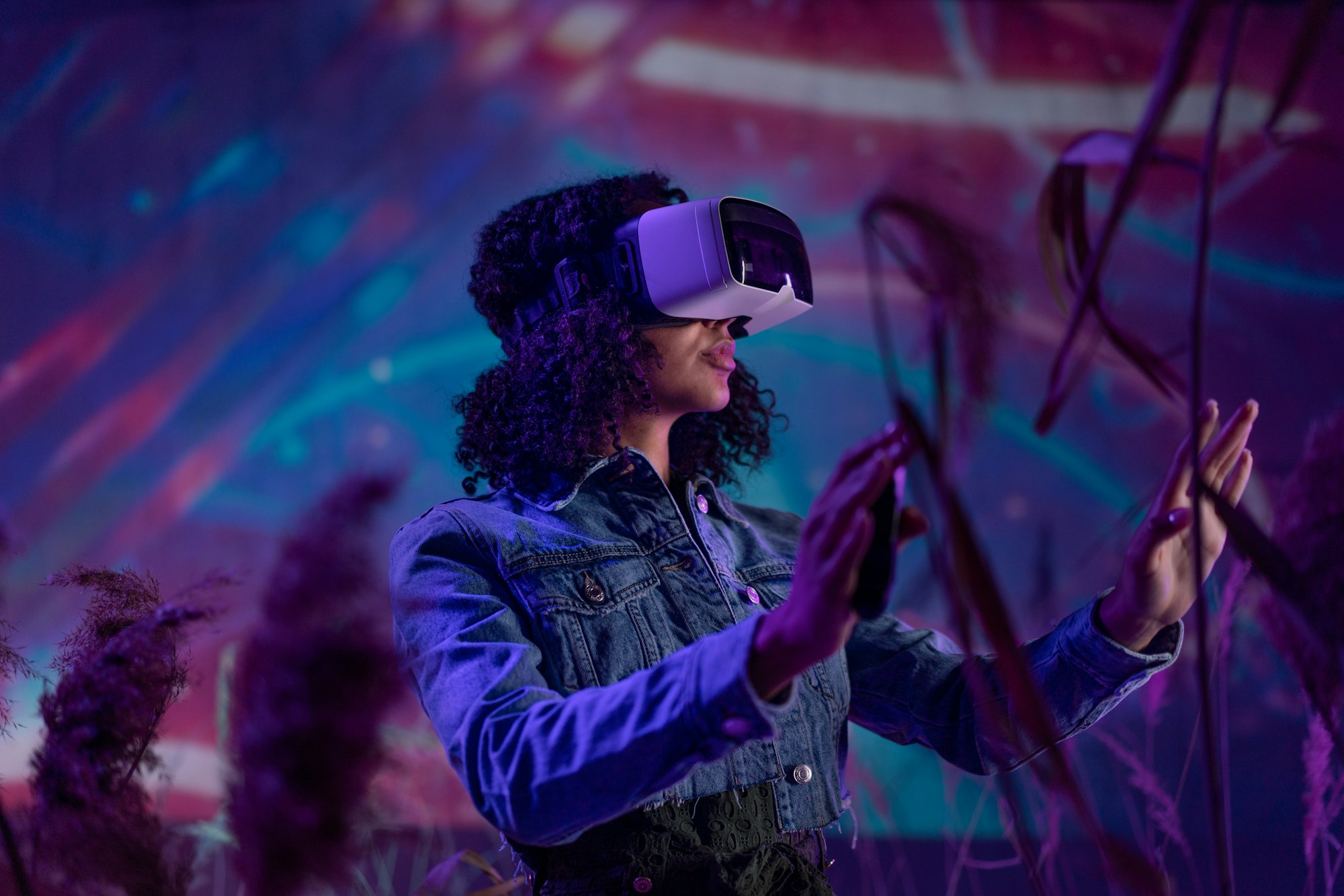
Virtual Concerts: The Future of Live Music in a Post-Pandemic World
The COVID-19 pandemic has had a profound impact on the music industry, forcing musicians and fans alike to adapt to new ways of experiencing live music. With traditional in-person concerts and festivals canceled or postponed indefinitely, virtual concerts have emerged as a popular alternative. In this blog post, we will explore the advantages, technology, tips, and challenges of virtual concerts, as well as their impact on the music industry and the future of live music.
The Advantages of Virtual Concerts for Musicians and Fans
Virtual concerts offer numerous advantages for both musicians and fans. For musicians, virtual concerts provide an opportunity to reach a wider audience and connect with fans from all over the world. Without the limitations of physical venues, musicians can perform from anywhere and still have their music heard by thousands, if not millions, of people. This opens up new possibilities for exposure and fan engagement.
For fans, virtual concerts offer convenience and accessibility. Instead of having to travel to a concert venue or pay for expensive tickets, fans can enjoy live music from the comfort of their own homes. This eliminates barriers such as distance, cost, and physical limitations. Virtual concerts also provide a more intimate and personalized experience. Fans can interact with musicians through live chat, participate in Q&A sessions, and even have virtual meet-and-greets. This level of engagement creates a unique connection between musicians and fans that is often difficult to achieve in traditional concert settings.
The Technology Behind Virtual Concerts: How it Works
Virtual concerts rely on a combination of live streaming, video production, and interactive technology to create an immersive and engaging experience. Musicians can perform from anywhere in the world using high-quality audio and video equipment. This equipment ensures that the sound quality is top-notch and that fans can see the performance clearly.
Fans can access virtual concerts through various platforms such as social media, streaming services, and dedicated virtual concert platforms. These platforms provide a seamless experience for fans, allowing them to watch the concert in real-time or on-demand. Some platforms even offer additional features such as virtual reality (VR) or augmented reality (AR) integration, which further enhance the concert experience.
Creating a Memorable Virtual Concert Experience: Tips and Tricks
To create a successful virtual concert, musicians should focus on engaging with their audience and creating a unique and memorable experience. One way to achieve this is through interactive elements. Live chat allows fans to communicate with each other and with the musicians during the concert. Q&A sessions provide an opportunity for fans to ask questions and get insights into the music and the artist’s creative process. Virtual meet-and-greets allow fans to have one-on-one interactions with their favorite musicians, creating a sense of intimacy and connection.
Musicians should also pay attention to the visual and audio aspects of their performance. Lighting, camera angles, and sound quality all contribute to the overall experience. Investing in professional equipment and working with experienced video production teams can help ensure that the virtual concert looks and sounds great.
The Future of Virtual Concerts: How They Will Evolve Post-Pandemic
Virtual concerts are likely to continue even after the pandemic subsides. They offer a convenient and accessible alternative to traditional concerts, allowing musicians to reach a global audience without the need for extensive travel or large-scale events. However, virtual concerts may also evolve to incorporate new technologies and innovations.
Virtual reality (VR) and augmented reality (AR) are two technologies that have the potential to transform the virtual concert experience. VR can create an immersive environment where fans feel like they are physically present at the concert venue. AR can overlay digital elements onto the real world, allowing fans to interact with virtual objects or characters during the concert. These technologies have the potential to take virtual concerts to the next level, creating even more engaging and interactive experiences for fans.
Hybrid concerts, which combine virtual and in-person elements, may also become more common in the future. This could involve live streaming a concert to a virtual audience while also having a limited number of fans physically present at the venue. Hybrid concerts offer the best of both worlds, allowing musicians to connect with fans both online and offline.
The Impact of Virtual Concerts on the Music Industry
Virtual concerts have had a significant impact on the music industry. They have provided a new source of revenue for musicians and venues during a time when traditional revenue streams such as ticket sales and merchandise have been severely impacted. Virtual concerts have also allowed musicians to continue performing and connecting with their fans, despite the limitations imposed by the pandemic.
However, virtual concerts may also disrupt the traditional concert industry. They offer a more cost-effective and accessible alternative to traditional concerts, which could lead to a shift in audience preferences. This could have implications for concert venues, promoters, and other stakeholders in the live music ecosystem.
Virtual concerts may also change the way musicians and fans interact and engage with each other. The ability to connect with fans directly through live chat and other interactive features creates new opportunities for collaboration and community-building. Musicians can use virtual concerts as a platform to launch new projects, engage with their fan base, and build a loyal following.
The Challenges of Monetizing Virtual Concerts: Finding Innovative Solutions
Monetizing virtual concerts can be challenging, as traditional revenue streams such as ticket sales and merchandise may not be as effective in a virtual setting. Musicians and venues need to explore new revenue models to ensure the financial viability of virtual concerts.
One possible solution is pay-per-view or subscription-based services. Fans can pay a fee to access the virtual concert, either on a one-time basis or through a subscription that provides access to multiple concerts. This model allows musicians to generate revenue directly from their fans and provides a more sustainable income stream.
Sponsorship and advertising may also become more important in the virtual concert industry. Brands can partner with musicians or virtual concert platforms to reach a targeted audience and promote their products or services. This can provide an additional source of revenue for musicians and help offset the costs of producing virtual concerts.
Virtual Concerts and Accessibility: Making Live Music More Inclusive
One of the significant advantages of virtual concerts is their potential to make live music more accessible and inclusive. People with disabilities or limited mobility can enjoy live music without the physical barriers of traditional concert venues. Virtual concerts can also reach audiences in remote or underserved areas, who may not have access to traditional concert venues.
However, virtual concerts may also present new accessibility challenges. High-speed internet and specialized equipment are necessary to access virtual concerts, which may not be available to everyone. Ensuring that virtual concerts are accessible to all requires addressing these technological barriers and providing alternative options for those who cannot access the concerts through traditional means.
Virtual Concerts and Sustainability: Reducing Carbon Footprints in the Music Industry
Virtual concerts have the potential to reduce the carbon footprint of the music industry. By eliminating the need for travel, virtual concerts can significantly reduce greenhouse gas emissions associated with transportation. Additionally, virtual concerts require less energy consumption compared to traditional concerts, which often involve large-scale production and lighting setups.
However, it is essential to consider the environmental impacts of virtual concerts as well. Streaming services consume energy, and the disposal of electronic equipment used for virtual concerts can contribute to electronic waste. It is crucial for musicians, platforms, and fans to be mindful of these impacts and work towards minimizing them through sustainable practices.
The Enduring Appeal of Live Music, Both Virtual and In-Person
Virtual concerts have emerged as a popular and innovative alternative to traditional in-person concerts. They offer new opportunities for musicians to reach a global audience and connect with fans in a more intimate and personalized way. Virtual concerts have also provided a lifeline for the music industry during the pandemic, allowing musicians to continue performing and generating revenue.
However, the enduring appeal of live music remains, and virtual concerts are likely to coexist with traditional concerts in the future. There is something special about the energy and atmosphere of a live concert that cannot be replicated virtually. Whether virtual or in-person, live music will continue to bring people together, create memorable experiences, and inspire a sense of community for years to come.









